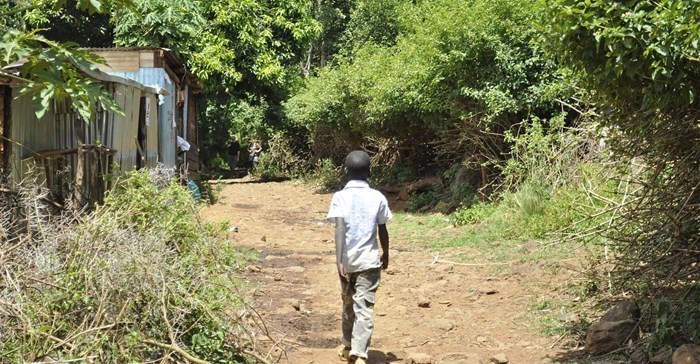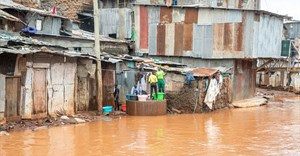What's driving persistent poverty in rural Kenya

From a population of 45.4-million in 2016, about 16-million people in Kenya couldn’t afford to meet their basic needs, which includes food, non-food needs such as clothing and shelter. About 14-million couldn’t meet their daily food requirements, while 4-million couldn’t buy food enough to meet their daily calorie intake even if they allocated their entire income to purchase food.
These statistics suggest that the fight against poverty is far from being won. Understanding why so many people stay in poverty is an important first step to alleviating it.
In a major study into poverty in rural Kenya, we sought to understand what drove poverty and why it remains endemic. The focus of the report was to look at why some households escape poverty – and stay out of it – while others escape poverty only to fall back into it, and why some descend into poverty for the first time.
The report looked at the three main factors that enable households to escape poverty sustainably and minimise the likelihood of returning to living in poverty again. These are resources, such as land, livestock, and assets; attributes such as household composition and education level; and activities, which include jobs and engagement in non-farm activities.
Between 2000 and 2010, we found that 50% of households in rural Kenya who were poor in 2000 managed to escape poverty in successive years. However, only 11% managed to sustain the escape with 39% falling back into poverty by 2010.
The question we tried to address in the report was: What is the best solution package to sustain poverty escapes for people living in rural areas?
Why rural people remain poor
Traditionally, agriculture has been seen as the best option to help rural households out of poverty. But the sector faces a number of challenges that diminish its influence in lifting households out of poverty.
First, land subdivisions have progressively left rural households with less land for agriculture compared to previous decades. In fact, extremely poor households have land that is just enough for settlement plus minimal agriculture.
Land markets in rural areas have also not been developed, possibly due to the insecurity of land tenure. As such, leasing of land for agriculture has not been meaningful as smallholder farmers only access season-to-season leases.
Additionally, agriculture now suffers from climatic shocks, disease and pest prevalence, declining soil quality, volatile agricultural markets, and low investment by both the public and private sector actors in agriculture. These shocks expose households that cultivate more land to production and market shocks. For households that rely heavily on agriculture, successive shocks could increase vulnerability to poverty.
Off-farm income, either from salary, wage, business income, or remittances, is increasingly becoming important to rural households. In 2000, off-farm income accounted for 42% of total household income compared to 55% in 2010. However, the ability of a household to generate significant off-farm income is constrained by capital and skills available to the household as well as non-farm opportunities accessible in rural areas.
In addition, high levels of formal schooling, such as tertiary education, increases the likelihood of migration to large cities. Poor households rely more on off-farm income although they make significantly less for similar activities when compared to non-poor or households that have sustained escapes from poverty.
Household shocks
Another factor that raises vulnerability to poverty is household shocks. These can include severe illness or death of the primary income earner in a household and loss of household assets through theft or calamity.
Although the country has had a national health insurance scheme providing universal health coverage since 2008, its uptake is very low among non-salaried people living in rural areas.
Medical expenses were cited as a key cause for impoverishment among households, through loss of income or sale of assets to settle bills. Death or incapacitation of male income earners also increases vulnerability for the household. There are cases where surviving spouse and children have been disenfranchised from inheriting land or property of the deceased male head. Households were also likely to fall back into poverty due to loss of assets or property through theft.
Some households reported a loss of harvest or stock through robbery. Without insurance, such households have to start all over but without capital.
What can be done
Second, there is need to develop the rural non-farm sector around agriculture. Gains have already been made in rural electrification, access to financial services, and enhanced connectivity through mobile phones. There is need to focus on skill development through technical training to take up opportunities in value addition, agro-processing and other rural non-farm sector opportunities.
![]() Lastly, there is need to enhance social protection such as by promoting the uptake of national health insurance coverage and upholding the rule of law. Increasing ease of access and flexible payment of premiums can motivate those who consider the transaction cost of taking health insurance to be high. Services such as those provided by the police and justice system should be a necessary deterrent to protect property. Working with the community to enforce law and order, where perpetrators get deserved punishment, will build confidence in the system and allow victims to seek redress.
Lastly, there is need to enhance social protection such as by promoting the uptake of national health insurance coverage and upholding the rule of law. Increasing ease of access and flexible payment of premiums can motivate those who consider the transaction cost of taking health insurance to be high. Services such as those provided by the police and justice system should be a necessary deterrent to protect property. Working with the community to enforce law and order, where perpetrators get deserved punishment, will build confidence in the system and allow victims to seek redress.
This article was originally published on The Conversation. Read the original article.
Source: The Conversation Africa

The Conversation Africa is an independent source of news and views from the academic and research community. Its aim is to promote better understanding of current affairs and complex issues, and allow for a better quality of public discourse and conversation.
Go to: https://theconversation.com/africa






















